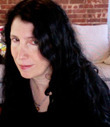Caroline Leavitt's Blog, page 13
October 11, 2019
Life. Death. Illness. Love. Loss. And art. Katherine Vaz and Isabel Pavão talk about their extraordinary art/poetry project THE HEART IS A DROWNING OBJECT, which everyone should pre-order immediately
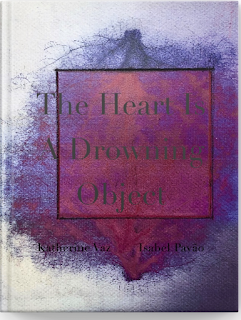 The exquisite moving book
The exquisite moving book 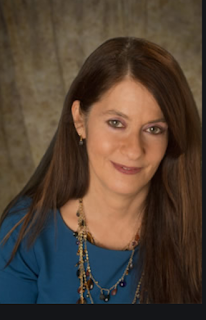 Katherine Vaz
Katherine Vaz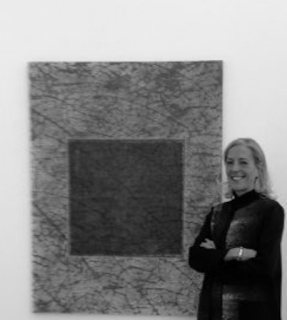 Isabel Pavão
Isabel PavãoYou've never experienced a book like this. I promise you. The Heart Is A Drowning Object, from Artist's Proof Editions, is a collaboration in poems and paintings by the novelist Katherine Vaz and the artist Isabel Pavão.And it is astounding. Vaz's poems center on the sudden affliction of her beloved husband and the way she tends him. Pavão’s vibrant pictures share and explore grief and age and, of course, love. Together, both show how late love, girded by the fear of possible loss, create a world that is even deeper in joy than ever imagined.
Please pre-order as soon as you can, so you can be as changed by this work of art as I was, and we can talk about it incessantly.
And thank you Katherine and Isabel for agreeing to do this interview!
About the Artist:
Isabel Pavão earned the degree of Doctor of Arts at NYU in 1994. A native of Portugal, she has lived and worked in New York since 1990. She exhibits her work in New York City, and in many museums and galleries all over the world. Among them are the Chiado Museum, Natural History Museum and National Museum of Ancient Art in Lisbon, Gulbenkian Foundation in Paris, National Museum of Rio De Janeiro, Museum of Modern Art in New Delhi, Orient Foundation in Macau, Poets House in New York. She also participates often as an invited artist as well as a guest professor in Universities, Art Schools, and Museums.
About the Writer
Katherine Vaz, a former Fellow in Fiction at Harvard University and a Fellow of the Radcliffe Institute for Advanced Study, is the author of two novels, SAUDADE and MARIANA, the latter in six languages and selected by the Library of Congress as one of the Top Thirty International Books of 1998. Her collections FADO & OTHER STORIES won the Drue Heinz Literature Prize, and OUR LADY OF THE ARTICHOKES & OTHER PORTUGUESE-AMERICAN STORIES won the Prairie Schooner Book Award. She has done many cultural exchange projects between Portugal and the U.S. and is the first Luso-American to have her work recorded for the archives of the Library of Congress, Hispanic Division. She lives in New York City with Christopher Cerf, a Sesame Street composer, TV producer, writer, and editor.
I’ve always believed that art can change us, emotionally, and maybe even on a DNA level. But it can do this only when it’s really close to the bone, risk-taking, and it hits all the sense. These two broadsides that I saw did that. I kept becoming immersed in the photos and artwork, the whole feel of them, and it felt like the poems were an integral part of that.
KV: I’m so glad you felt like that! Immersion—the idea of drowning—is about the enveloping that occurs when all senses are firing. And we very much want the viewer and reader to add to what we’re offering—so that all of us are speaking together. What’s close to the bone is of course close to the heart. The poems begin with an actual damaged heart in a love story—a husband with a sudden affliction, and a wife tending to him but also to the biggest truth we all carry, that one day an end will come, for those we love and for ourselves. How do we carry this so profoundly that we can find joy anyway? And even more: How can we find joy in the process itself of endings?
IP: Because we’re not just drowning...when we discuss the idea of dropping, going down, maybe into water, into something, we transcend ourselves. It’s no longer about you or me, it’s a sense of communal experience—or feeling. Something that no longer belongs to us—it is a Thing out there. If we go into it, we join everyone else. We touch a feeling that is no longer ours, but one that belongs to humanity. That’s also what a collaboration is about!
I always want to know what haunted you into writing this book, and how did it take shape? How do you both know each other, and how did you know you could work well together? I love the whole idea that it is about older women/older woman, and facing the illness of a husband. These are things that have not always been talked about, especially the differences between a long-time love when you are older and one that sparks and fireworks when you are old. I love that. Was that part of your intention? The images I saw are perfect for the prose and I was wondering how both of you worked to make this happen? What was the planning like?
KV: I’ve written novels and short stories, five books now, with a lot of themes about the Portuguese community in America, especially California, where I grew up, and I’m fascinated by art books, by combinations of painting and words. I do box-art pieces. I’ve done lots of cultural things for the Luso community (“Lusitania” being the old Roman word for Portugal)…and I’ve long been acquainted with Isabel’s gorgeous, deeply felt art. She’s exhibited all over the map, a native of Portugal but longtime New Yorker. Both of us are transplants who adore where we now live. It was Ana Miranda Ventura, who runs Arte Institute in New York City—an organization dedicated to promoting the cultural and art of Portugal in liaison with North American artists, writers, filmmakers, musicians of Luso descent—who introduced us. I can still see us sitting in the library in my home, the three of us talking away. Isabel and I knew we wanted to do something together.
IP: Yes, but at first we didn’t know what. We deliberately did not want to plan. First we recognized that we had a lot of links concerning color in our work—vividness in your stories, a fascination with people who think in color—
KV: And your work has that too, of course.
IP: Yes! And some time went by, but we finally made a lunch date, first at the Harvard Club, followed by another one at the Lotos Club in New York. We agreed not to come in with a list of ideas, but to see what might evolve naturally. It was funny how we surprised ourselves with what became the obvious parallel of having older husbands who had undergone serious ailments and spent a long time in the hospital, but it was important not to report on that alone as photo-realism, but to go into the secrecy of that time, the feel of it. The silence and the hunger. We could have called upon friends, but we both chose to address these times of pain and uncertainty and fear with quietness. We wanted to delve into how it felt to be an older woman dealing with a longtime love. We don’t hear about that very much. It’s not hugely acknowledged—almost as if it’s rare or insignificant or even embarrassing. We wanted to feel our way along rather than outline too much or spell things out. So at our lunches, we made a grid. That was our start! The stages of feeling and the colors that might relate to what happened, or to the stages of going into and coming out of the immersion of fear of loss. “Mottled” was the first category.
I went home and start making drafts of paintings. At first, I held back, because I didn’t know what to do, and then it was an incredible burst—a flooding! The pictures poured out of me.
KV: The best part was that it was exactly the same for me. I haven’t written much poetry. We’d agreed that I’d look at your pictures and make suggestions; we’d rearrange or omit or adjust, but I was astonished that I loved them all and in fact suggested we leave the raw rough edges, as if that captured even more the idea of creation in a burst. I think I suggested changing the order of only two paintings?
IP: Two. Yes. That was it. I was astonished too, that it made sense for both of us to keep to this idea of “Draft” as a form of its own. It felt truthful to our feelings and artistic vocabulary.
KV: I held back from writing as well, when I had all your paintings, and then it was a gusher. It felt exhilarating. I worked after you did, and it seemed to happen very fast. We talked about doing one painting and poem at a time, a pairing, but after everything poured out of you, I followed the exact same curve of experience. That was part of the unity we made. Good for a book about drowning that it all felt complete and fluid.
IP: In spite of the subject being a fear of the future, a wariness about living without the person! Somehow also the idea arose that this is a common issue for women our age, but it’s taboo.
KV: Why is it such a taboo, do you think, Isabel?
IP: We don’t want to face vulnerability. I don’t know. The culture?
KV: Because we feel we have to be strong all the time, or is it because we’re invisible?
IP: Invisibility. It’s more a case of invisibility for older women. We created an artistic voice when we were young, and now we have to find it again, or to make a new one.
KV: In spite of being artists our whole lives.
IP: This is a new situation, a new exposure of ourselves. We have gone through a definite experience of actual life-and-death. We were called upon to respond.
KV: An experience we didn’t choose, but one that everyone faces.
IP: There’s no guide or manual on this, because the issues older women face aren’t addressed! There are manuals on birth, how to teach toddlers, etc. But no education on being closer to the biggest issues of life, which are about handling loss or maybe changing what loss should mean. So we chose color, the feel of the body, to talk about these things. An intensity of sensation.
It’s part of our vocabulary as creators. Using colors. Foods, colors, flowers—those are equivalent to feelings. That’s the common language we both had, from the beginning.
KV: Then one night, I was giving a reading at KGB Bar in New York, at the invitation of Elizabeth Hodges, the editor of the St. Petersburg Review because I had a new story in her magazine, and Katherine McNamara, the publisher of Artist’s Book Editions, one of Elizabeth’s friends, happened to be there, and we chatted, and I mentioned the collaboration. And she said that was exactly the sort of project she liked.
IP: And remember when you and I met at the Morgan Library, after I’d come back from Portugal, and Katherine wrote to you maybe twenty minutes before we met for coffee, saying she wanted to publish the book? And she became a third collaborator. We spent a weekend in her home in Charlottesville, and she brought exquisite talent to the project—her vision of how to present images and words, how to create video poems, how to produce elegant prints. As it happened, she had her own story of love and loss.
I’m astonished at the exquisite beauty of the images and the prose, but the emotions that welled up as I read were almost overwhelming. (By the way, these lines did me in: When I die, please let me be the shade fuchsia in the 30-gigahertz band.
When my husband dies, please let him be the sound there.)
KV: Isabel’s work evoked the radio spectrum color chart for me, among other things. I like that sound and color have an official code. I’m glad you liked those lines.
IP: The other thing to point out is that we did not want to have writing that described the images, and we didn’t want the artwork to be only illustrations accompanying words. We wanted some kind of elevation—we wanted to create something else entirely, together. A collaboration. The images and words becoming a new thing, a new dimension if we could.
KV: I wanted to be inspired by the colors and paintings and to have them inform what I wrote, but we did a good job in avoiding the sense of illustrations.
Katherine, you said something to me, about this being “the color and feel of an older woman, in her physical being.” Can you talk about this please? (Both of you, please.)
KV: There’s a movement in writing by women now to eschew what can be seen as emotional or sensory, an insistence that this is an old trap. The argument is more or less: “Women are not merely emotional creatures who can only write about love rather than the intellect. Sensory views of the world are therefore inadequate.” But I wanted to have both, because the physicality of older women calls for that, as it does for anyone carrying the state of grief—men or women, young or old. And in that, I hope, the intellect is also awakened, but the brain doesn’t take the lead.
IP: Being intellectual at every moment can be a form of self-protection! And as women, we are always being asked to rationalize, to explain. But I think real exposure of the inner self goes a step further. That’s what we chose to do. And it’s a risk for a writer, or artist, to tell a story that way. We need bliss, joy of the body too.
KV: A friend just described my life, and hers—she’s older too, with an ill husband—as being in the “sweet spot.” We’re lucky with having great love in our lives, and it is still here. We’re all still here, and that’s the joy.
IP: The experience gave me the power to produce this. I couldn’t have done it five years ago. It’s a creation out of a certain timing in life. Also, as we’ve said, as people get a little older, the intellectualize, as a protection; they step away from vibrancy, and this is an opposite response, to celebrate the spirit and life.
KV: Here’s a “physical being” response. I gave a reading at Hunter College one night, a few hours after I was told that they didn’t know why my husband wasn’t getting better. My eyes got physically so cloudy it was hard to read. But as if through a scrim, I saw one friend, Dylan, who had tons of things going on in her life, and yet she was there. And my friend Dustin said he would walk me home afterward. He and his husband lived in the opposite direction, but he insisted, and we walked the few blocks, and we talked about general things and said good night—and I thought that was so remarkable, such a lovely thing. A perfect comfort. All of us say, Tell me what I can do to help, but the best moments are when life naturally flows in a companionable way.
IP: This collaboration is about celebrating love’s fragility, and I want to say also that we’re talking about older women, but really, fragility is present at any age. When we’re older, we’re more likely to be asked to deal with it, to understand and feel it; when younger, we might postpone it, dealing with the ending of life. But we all now it’s there.
We chose to go through the illnesses of our husbands pretty much in silence. We could have called our friends, yes. But it was our choice to go through it alone, to converse our energy.
KV: I’d pass a falafel place when I’d walk home from the hospital. Now when I pass that place, I can smell the hospital too. You had part of a large meat pie every night. Could we mention your meat pie?
IP: (Laughs). Every night, a small piece. A symbol of survival, keeping being alive…and a glass of red wine…
What’s next up for both of you?
IP: Putting this creation out! Celebrating it. I have a show coming up in Lisbon, a retrospective, thirty-five years of my career. Revisiting my different stages!
KV: I’m finishing a new long novel. In contrast to the speed of The Heart Is a Drowning Object, this book has taken fifteen years.
What are you most hoping that people will get from this gorgeous work of art?
KV: To feel in communion with the notions that have nothing to do with age. I’d be happy if young men also had a strong reaction to our book. It’s about love. We all know we can lose someone at any moment. This collaboration is about changing the normal response of fear to an intensity that’s in fact about finding pleasure.
IP: I totally agree. Plus the beauty of this has been in the creating of it, and with Katherine McNamara’s help putting it out there. It doesn’t belong to us any more! I want it to be gender-less; it belongs to everyone who reads/sees/listen to it. We put it out there for others to embrace it, or not!
What’s obsessing you now and why?
KV: I have to fix my damn ceiling. All those aquatic images you did, Isabel, were so sumptuous, but water is not so pretty when there’s a downpour through the roof! Our ceiling collapsed in the last rainstorm.
IP: We have a parallel there too! My house got hit in the storms and we’re leaking all over. You and I have this eerie connection. You know what we haven’t mentioned? The process of working together was a real delight. The easy flow of it all—that was a surprise! The ease of doing something together, from all that we’d stored up. And out of it is our friendship now. We knew of each other, but we hadn’t yet become friends, and now with Katherine McNamara also there is a bond based on sharing and work, a collaboration, a sisterhood. Taking the train together, speaking Portuguese on the way to Charlottesville…we found out we had an obsession with packing our lunches really precisely. We laughed the whole way.
And we visited the printing press with Katherine M., and went to a garden party, and found each other, all three of us. And we laughed on the train the whole way back. Suddenly Katherine and Isabel and Katherine, the KIK Sisters. The work gave us each other.
Please check out these links:
The Heart Is A Drowning Object, on Artist’s Proof Editions, for more information (with link to Apple Books): http://www.artistsproofeditions.com/the-heart-is-a-drowning-object/
https://books.apple.com/us/book/the-heart-is-a-drowning-object/id1482030857?ls=1 (the book can be pre-ordered and will be available October 22nd, 2019)
A video poemhttps://vimeo.com/361705094
<!-- /* Font Definitions */ @font-face {font-family:"Cambria Math"; panose-1:2 4 5 3 5 4 6 3 2 4; mso-font-charset:0; mso-generic-font-family:roman; mso-font-pitch:variable; mso-font-signature:-536870145 1107305727 0 0 415 0;} @font-face {font-family:Calibri; panose-1:2 15 5 2 2 2 4 3 2 4; mso-font-charset:0; mso-generic-font-family:swiss; mso-font-pitch:variable; mso-font-signature:-536859905 -1073732485 9 0 511 0;} @font-face {font-family:Cambria; panose-1:2 4 5 3 5 4 6 3 2 4; mso-font-charset:0; mso-generic-font-family:roman; mso-font-pitch:variable; mso-font-signature:-536870145 1073743103 0 0 415 0;} @font-face {font-family:Times; panose-1:0 0 5 0 0 0 0 2 0 0; mso-font-charset:0; mso-generic-font-family:auto; mso-font-pitch:variable; mso-font-signature:-536870145 1342185562 0 0 415 0;} @font-face {font-family:inherit; panose-1:2 11 6 4 2 2 2 2 2 4; mso-font-alt:Cambria; mso-font-charset:77; mso-generic-font-family:roman; mso-font-format:other; mso-font-pitch:auto; mso-font-signature:3 0 0 0 1 0;} @font-face {font-family:"Helvetica Neue"; panose-1:2 0 5 3 0 0 0 2 0 4; mso-font-charset:0; mso-generic-font-family:auto; mso-font-pitch:variable; mso-font-signature:-452984065 1342208475 16 0 1 0;} /* Style Definitions */ p.MsoNormal, li.MsoNormal, div.MsoNormal {mso-style-unhide:no; mso-style-qformat:yes; mso-style-parent:""; margin:0in; margin-bottom:.0001pt; mso-pagination:widow-orphan; font-size:12.0pt; font-family:"Times New Roman",serif; mso-fareast-font-family:Calibri;} p.MsoHeader, li.MsoHeader, div.MsoHeader {mso-style-noshow:yes; mso-style-priority:99; mso-style-link:"Header Char"; margin:0in; margin-bottom:.0001pt; mso-pagination:widow-orphan; tab-stops:center 3.0in right 6.0in; font-size:12.0pt; font-family:"Times New Roman",serif; mso-fareast-font-family:Calibri;} span.HeaderChar {mso-style-name:"Header Char"; mso-style-noshow:yes; mso-style-priority:99; mso-style-unhide:no; mso-style-locked:yes; mso-style-link:Header; mso-ansi-font-size:12.0pt; mso-bidi-font-size:12.0pt; mso-fareast-language:EN-US;} .MsoChpDefault {mso-style-type:export-only; mso-default-props:yes; font-size:10.0pt; mso-ansi-font-size:10.0pt; mso-bidi-font-size:10.0pt; mso-fareast-font-family:Calibri; mso-fareast-language:JA;} @page WordSection1 {size:8.5in 11.0in; margin:1.0in 1.0in 1.0in 1.25in; mso-header-margin:.5in; mso-footer-margin:.5in; mso-paper-source:0;} div.WordSection1 {page:WordSection1;} </style> -->
Published on October 11, 2019 07:04
September 30, 2019
Everyone, meet the patron saint of readers and writers, the amazing Zibby Owens! Here, Zibby talks about her famed podcast Moms Don't Have Time To Read Books, (up for a Lovie Award, so read on and vote by October 3rd), her book recommendations, why she mig
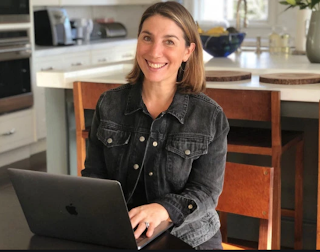
Zibby Owens has been called the Oprah of the podcast world. And rightly so. Her incredible podcast, “Moms Don’t Have Time to Read Books” was nominated for a Lovie Award, the European version of the Webby Awards! Please vote it up here for the People’s Choice by October 3rd. She writes fabulous articles, she has great reading suggestions (who else would suggest books by emotional issue?), she organizes events, and she's just, well, cooler than cool.
I'm so happy to host her here. Thank you so much, Zibby! And your book recs to me were right on the money!
I don’t know anyone who does so much for books—and in such an inviting and cheerful and creative way. I love your podcast Moms Don’t Have Time To Read Books because honest to God, you READ the books of your authors and ask the smartest questions. How did this podcast start?
It started in such an offhand way! I had been writing a bunch of parenting essays and my husband one night said, “Maybe you should take all your parenting essays and make them in to a book!” And I replied, “Ugh, moms don’t have time to read books!” Then I said, “Hey, that could be a funny title!” I ran the idea past a few agents - who disagreed! Then an author friend, Sarah Mlynowski, suggested to me over coffee that, “You should really start a podcast.” I responded, “What’s a podcast?!” After that, I researched what else was out there and decided to try one with that same title!
I also really love the essays you write, first because not only are they beautifully written, but they all have a feel to them, as if you are sitting across from us at a café, over coffee, casually opening up your heart and letting us see the contents. I loved the essay about the psychic, the essay about sending your son off to boarding school (Oh God, wait until college, though I will tell you, they DO come back. Altered, but they are still yours in many important ways.) Do you think of an audience as you write? (I can’t or I freeze up, but you seem much more self-possessed than I am.
I don’t really think about my audience. As you said, I just write from the heart. I write so that I remember how I felt. I write to share my experiences with others so that we can all go through life a bit more connected! But no. When I’m actually writing, I’m not thinking about an audience at all.
You have written about food, health, being a mom, but oh my God, this article about how to hook poor time readers really was full of fabulous innovative ideas, especially about a book show that isn’t boring. (https://www.thebookseller.com/futureb...) I love the idea of putting out reading samples for people to get hooked and then buy the book. I think Dearreader.com does that, or they used to, but we need more places like that. I admit I’ve left books at doctors’ offices myself, Do you think authors should be posting little teasers from their own books on their social media pages?
I think that would be great!! Or videos of them reading a chapter and answering some questions!
OK, we have to talk about your VIP book curator service. (I’ll put this link in: https://zibbyowens.com/swag/vip-book-...). What strikes me about this is how much fun you are clearly having doing this (and, of course, what a blast for the person who hires you.) So what surprises you when you do this? And tell us about how you devise reading plans for people? How accurate are you?
Um, no one has actually bought this yet!!! But I do offer personalized book recommendations to anyone who signs up for my newsletter. As you know, I just did yours!! They’ve been building up in my inbox but I finally got back to everyone. I love seeing what my listeners have been reading and what they’re in the mood for. It helps me get a sense of what’s popular and what isn’t … and what people think of certain books! I love connecting individually with fellow book lovers!
You really really help the writers’ community, (which I try to do with my blog and by being just as helpful as I can be.) And you seem to do everything. What are you really dying to do next that you haven’t done yet? Does anything scare you?
I’m dying to open a bookstore and I think I may have found a partner to actually accomplish this! I would also love to do more with TV and write a book or two myself! Does anything scare me? Something happening to my kids.
Holy Moly, Mother of God, I was about to order 40 Love when I saw you gave it up and started over. You have to tell that story. And PS, the cover is great. I know this is a question that all writers hate, but I’m going to ask you anyway…how is the writing going?
This project is on hold for now. I’ve tried writing it as a memoir and in two different styles as fiction. I’m going to revive at some point and I’ve been toying with a new plot in my head. I might just try to make it into a great essay! If you want the whole story, we might need to have that coffee!
I also love that you have and showcase books you wrote which stayed on the shelf. All writers have those! Jonathan Evison talks about the 6 novels he buried. I couldn’t throw away a novel I wrote, which couldn’t sell, but I was able to cannibalize sections of it and put it in another novel later on. So all is never lost. Will you go back to those books, do you think?
I think I can find a new life for some of them in another form!
What’s obsessing you now and why?
Um… chocolate chip cookies, per usual!!
What question didn’t I ask that I should have?
Maybe just something about how I get it all done!? And for that I have to credit my husband, Kyle Owens of Morning Moon Productions, who inadvertently led me to start the podcast and is my #1 fan and champion with literally every thing I do. I get his advice on everything from article titles to guests on the show to… everything! Also my kids have been amazingly supportive and are super into the whole thing. It would be impossible to get anything done if they weren’t enthusiastic about what I was doing.
Website: www.zibbyowens.comPodcast: Moms Don’t Have Time to Read BooksInstagram: @zibbyowens; @momsdonthavetimetoreadbooksFacebook: @byzibbyowens; @momsdonthavetimetoreadbooks
<!-- /* Font Definitions */ @font-face {font-family:Helvetica; panose-1:0 0 0 0 0 0 0 0 0 0; mso-font-charset:0; mso-generic-font-family:auto; mso-font-pitch:variable; mso-font-signature:-536870145 1342208091 0 0 415 0;} @font-face {font-family:"Cambria Math"; panose-1:2 4 5 3 5 4 6 3 2 4; mso-font-charset:0; mso-generic-font-family:roman; mso-font-pitch:variable; mso-font-signature:-536870145 1107305727 0 0 415 0;} @font-face {font-family:Calibri; panose-1:2 15 5 2 2 2 4 3 2 4; mso-font-charset:0; mso-generic-font-family:swiss; mso-font-pitch:variable; mso-font-signature:-536859905 -1073732485 9 0 511 0;} /* Style Definitions */ p.MsoNormal, li.MsoNormal, div.MsoNormal {mso-style-unhide:no; mso-style-qformat:yes; mso-style-parent:""; margin:0in; margin-bottom:.0001pt; mso-pagination:widow-orphan; font-size:12.0pt; font-family:"Times New Roman",serif; mso-fareast-font-family:Calibri; mso-fareast-theme-font:minor-latin;} .MsoChpDefault {mso-style-type:export-only; mso-default-props:yes; mso-fareast-font-family:Calibri; mso-fareast-theme-font:minor-latin;} @page WordSection1 {size:8.5in 11.0in; margin:1.0in 1.0in 1.0in 1.25in; mso-header-margin:.5in; mso-footer-margin:.5in; mso-paper-source:0;} div.WordSection1 {page:WordSection1;} </style> -->
Published on September 30, 2019 15:32
September 23, 2019
Portrait of the novelist as a painter, too. Mary Morris talks about painting and writing and creativity--and P.S. You want to pre-order ALL THE WAY TO THE TIGERS as soon as you can.
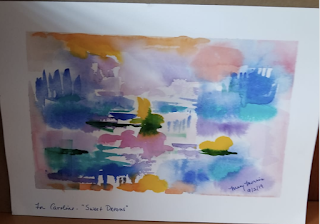
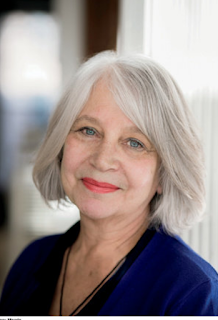
I know and surround myself with a lot of creative people, and it always amazes me when it turns out a painter is a fine writer, or a writer can also dance ballet. When I was in high school, I thought about being a painter, and even had a special scholarship with two other girls to attend Mass College of Art special classes. But though I've continue to paint, writing took over.
When I heard that acclaimed author Mary Morris paints and saw some of her gorgeous work, I wanted to buy a painting! Mary Morris is the author of numerous works of fiction, including the critically acclaimed novels The Jazz Palace, A Mother’s Love, and House Arrest, and of nonfiction, including the travel memoir classic Nothing to Declare: Memoirs of a Woman Traveling Alone. She is a recipient of the Rome Prize in literature and the 2016 Anisfield-Wolf Award for fiction. Upcoming soon in June 2020 is All The Way to the Tigers, and trust me, you WANT this memoir, about traveling solo, finding redemption and ...tigers!
Thank you so much for being here, Mary! I love my painting and I love you.
It’s always fascinating to me when writers do other creative things. They also dance, or paint, or act, or knit or sew or sculpt outrageously well. But what is more fascinating is how seriously we creatives take those other things that we do. I’ve been painting since I was a kid, and was good enough to get into a program for high school students at Massachusetts College of Art. I did oils and acrylics, watercolors and pen and inks, and then writing took over. Art was pushed to the background, and though I still love to paint watercolors, I don’t’ take it as seriously as my writing.
Which brings us to you, and your gorgeous paintings, which you obviously take seriously.
How did you start to paint? And why?
That’s so interesting that you have this visual art background. I never knew that! Also funny that you think I take my paintings “seriously.” I actually try to take them “unseriously” if you know what I mean. I guess it all goes back to the mother, doesn’t it? My mother was a very creative person. She could do anything with her hands. She sewed and quilted. She had great craft skills and she painted. I have a vivid memory of watching her paint a strange image of a woman whose face was a brilliant blue on one side and black on the other. She was wearing an enormous hat. I remember watching my mother make this painting.
When I was fairly young I took painting classes with a man named Jerry Valez. He had a small studio on a side street in our town and I’d go there once a week and paint in oils. I’m not sure how old I was but I had a sense at a young age that I wasn’t very good at it.
Still I always loved, and still love, painting and visual art. But I never learned how to draw. This has always been a ……. I wanted to draw but I just never got around to taking a class. Anyway I started traveling and I traveled a lot and then one day I began to bring a visual component into my travel journals. They were very multi-media and included collage, some drawing, pen and ink, and at some point I added watercolors. I began to travel with a small set of watercolors and with time the journals became as much as what I saw as what I felt (and in which case wrote down).
What does painting mean to you? What do you hope it means to those who see and love your work?
Freedom. I find that I am completely free when I am painting. I am often very ego invested in my writing (and I wish I weren’t). As a friend once said to me years ago, if you’re ego gets in the way you’re doomed for all eternity. I am egoless when I paint. I honestly don’t care. Another quote I like comes from the Rose Tattoo, this middle-aged woman shows Marlon Brandon a landscape she painted. A very ordinary landscape and he just stares at it blankly. She says to him, “I know they aren’t very good, but I feel better when I do them.”
That is what freedom is about for me. Feeling better means being more in touch with an elusive part of yourself where you can be very present and quite frankly have fun. Be playful. The minute it stops for me in painting I’ll probably stop doing it. I guess basically I have to not care. Recently I got my first commission and I just couldn’t do it. It was for a big piece and required special paper. Most of my paintings have been in my journals or on small sheets of paper. But this was to be big. It had to fill a wall in a friend’s new house. Needless to say I felt a huge sense of responsibility. And then I finally said to myself, for lack of a better word, fuck it. Just do what you’ve always done. Do it intuitively.
When others look at my painting, I want them to feel the joy that I feel when I make them.
I don’t know what I am doing when I set out to paint. I let the colors, the moisture and texture of the paper, the quality of the pigments dictate to me. There’s an artist whose work I like and I have been studying her technique. Her name is Barbara Nechis and the book of hers that I rely upon is called Watercolors from the Heart.
What other writers or artists have influenced you in this work?
I know he’s fallen out of favor but I have always been drawn to Henry Miller as a thinker and as a painter. I love his travel writing and his literary essays. His Colossus of Marousi is, in my opinion, one of the great travel books. And I love his painting. He painted all the time and he published several books of his paintings, including one called something like Paint and Die Happy. That’s about where I am at.
I’ve also been influenced by some of the great journals such as the journals of Frida Kahlo. There’s a terrific facsimile of her journals that you can buy. And also Dan Elon who was an incredible artist and journalist who died tragically in Somali at the age of 26. His mother put together the extraordinary book of his journals called The Journey Is the Destination. His work is just amazing.
And finally I am incredibly drawn to the work of Joan Mitchell in part, at least initially, because she was married to my cousin, the publisher of the Grove Press, Barney Rosset. Joan was Barney’s first wife and I believe the only one he truly loved. Joan is a great artist and I find it actually an honor to stand before her work. She strikes a balance between peace and power. Perhaps in some ways that is the definition of beauty – that balance that is so hard to strike.
What influence does your art have on your writing—or vice versa?
I feel as I may have answered this above, but basically if I get caught up in my ego around my writing, if I start saying to myself oh this is no good or not good enough or no one’s going like it or buy the book or whatever, I have to stop. And that’s when painting can come in.
You know here’s another good example. I am a very good cook. I like to cook. But I am only a good cook when we don’t have company, when it’s just me and my family. Because if someone is coming over, then I have to impress that person, then I have to make a monk fish with chervil sauce or something else that will make them think I’m great. And you know those meals are never very good. It’s the spontaneous ones. The ones when you say oh I have some nice mushrooms and chicken breasts and red wine. I think I’ll make coq au vin, just for the fun of it, for the hell of it. Those are the meals I wish I could serve you.
My studio is actually set up in such a way that I can swivel from my writing desk to my painting desk. For a while I had the painting desk upstairs in our daughter’s old bedroom, but then she and her husband came and reclaimed that space so I moved the art table downstairs and the results for me have been great. I can move fluidly from one medium to the next and if I start to care too much about the writing, if I start to worry it to death, I switch over to a painting where I can be much more fluid and free.
Published on September 23, 2019 12:02
Drue Heinz Literature Prize winner Kate Wisel talks about the best titled book ever, DRIVING IN CARS WITH HOMELESS MEN, the deep scars of four Boston women, why hope is never lost, writing, and so much more.
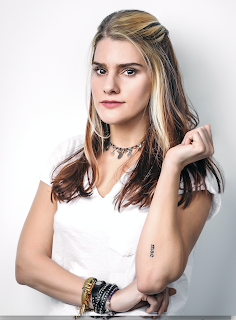
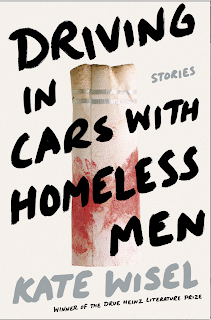
Kate Wisel is a native of Boston. Her writing has appeared in publications that include Gulf Coast, Tin House online, Redivider as winner of the Beacon Street Prize, among others. She received her MFA from Columbia College Chicago, and is currently a Carol Houck fiction fellow at the University of Wisconsin-Madison where she teaches fiction, and works as an assistant for music critic Jim DeRogatis.
Driving in Cars with Homeless Men is astonishing--so astonishing it won the Drue Heinz Literature Prize. And Holy Moly, Look at just some of the praise:
This debut collection of short stories traces the visible and more subtle scars of four women: Serena, Frankie, Raffa, and Nat. What binds them above all else are their experiences of violence. Against the vivid backdrop of early 2010s Boston, their antics and heartbreaks are kept inside tiny apartments, spill onto the streets, and wander into dirty dive bars. It’s GIRLS without all the privilege and a fictionalized version of Lisa Taddeo’s Three Women (2019), if the three women were friends…this is fierce and emphatic. -Booklist
You can hear the crackle of heat and the roar of a powerful fire burning through these pages. Young angry women, brokenhearted mothers, and men who are lost to themselves and others struggle in the world of Driving in Cars with Homeless Men. Close to the edge, fearful of love yet dying of longing, Serena, Frankie, Raffa, and Natalya are vital and tender. Their stories are incandescent. Min Jin Lee, 2019 Drue Heinz Literature Prize judge and author of Free Food for Millionaires and Pachinko, a finalist for the National Book Award
“Kate Wisel’s women think like razor blades. They talk tough and love tougher, except how they love each other which is pure and deep, and ought to be enough, except it isn’t, ever. These women vibrate with life, with longing, with an urge toward self-annihilation, with hope. Their hope will break your heart the hardest. Along with the sentences, which seem to be written by angels, razor-blade toting angels. This is one architecturally stunning, linguistically dazzling, hyper-intelligent, heart-expanding debut.” Pam Houston, author of Cowboys Are My Weakness; and Deep Creek: Finding Hope In the High Country
“Kate Wisel is a fearless writer—with literary guts and a distinctive nitro style--and Driving in Cars with Homeless Men is a remarkable debut. The gritty lyricism of her voice makes me think of punk rock and blown mufflers and creaky bedsprings flavored with cigarette ash, red bull-and-vodka, gum stuck to the bottom of a Doc Marten, a little bit of Denis Johnson mixed up with a Janis Joplin howl. Welcome her. I can't wait to see what she does next.” Benjamin Percy, author of The Dark Net; Thrill Me; Red Moon; and Refresh, Refresh Thank you so much for being here, Kate!
I absolutely loved the fierce young women (and the struggling men) in Driving in Cars With Homeless Men. Where, in your psyche, did they come from? What haunted you into writing this fabulous collection?
Thank you so much for your enthusiasm. I’m so glad you loved the women. I think of the psyche as the internal state, and there’s a filter between the outside world and the psyche. For me, what moves through this filter is patterned when observed as a whole, and by default, has a point of view.
Sometimes I feel like a metal detector, which is fine by me. I’d rather feel primarily like a metal detector than, I don’t know, somebody’s third wife? I look, am attracted, let life as it is speak to me. If imagination is the connection between what’s real and physical, and what can defy that, a possibility, a beyond, then the characters and material come from my experience, filter through as an amalgam, then run away from me into imagination. Writing the stories felt like chasing after a predator and tackling them to the ground. That’s how I knew they were stories, if I was moving behind them, sometimes angrily or with a type of trepidation. And then I picked up different DNA as I went, the best laughter I know, a woman’s fingers looking like keyholes on the train, sifting through the contents of an addict’s backpack, the cadence of a Boston accent, how the Goodyear logo is a pair of wings above the heel of a sneaker. Life is Seinfeldian, perfectly timed, a design that calls back to itself, even and especially when it’s going disastrously. That’s why it’s satisfying to recreate life, all the parts as a whole are painfully perfect as is.
Because I was being taken to defining places or moments in each character’s life, structurally, I could tell the women’s overall story more intricately, like a web, all messy and connected. I realized I was interested in the consequences of these four character’s pasts, their victories and failures. More broadly, what came through the filter was what happens to girls who keep men’s secrets inside them. Where they go, together and alone, and how they survive.
Do you think there is ever a moment when hope is truly lost?
Never. I wanted the book to feel like it was never at rest because my characters can’t afford to stop. They’re in motion, and because of that there is a physicality to hope and it’s how the characters are propelled. Also, I don’t think the girls ever lose their sense of humor, which is another form of hope.
What kind of writer are you? Do you map things out, or does that pesky Muse guide you along?I don’t map things out but if you think about, a story’s like a map. You’re guided by the tension of logic and imagination, which is really just a scenario. Here’s what happens if…
Being such a highly praised debut author must be intoxicating—how does it fuel you into your next work? How does it hamper you?Literature is, of course, a conversation, and if I’ve had the chance to speak then my job now is to listen. If there’s something I’m working on, I dedicate my life to it. But I’m learning now about process and reading a lot about what other artist’s processes look like. I like what Mathew Klam says about being versus doing. Sometimes an artist’s job is to be so they cando. You can’t have a point of view, use it, then expect you’ll have another like a beer. I want to earn my point of view. I’m not churning out pages to impress anyone. I want to know what this time is about, what moves me, what I’m interested in.
What’s obsessing you now and why?
Last week I saw a man texting with his toes at an outside patio. The man had his forehead pressed to the table, and underneath, his toes were typing as if he was playing a piano. From my car, I saw a woman dancing in a park, alone, so happy. We caught eyes and she wasn’t angry. She was okay with me witnessing her. “I hope you got the diamond necklace that I sent to you.” These were the lyrics I remember from the song that was playing in my car. In the documentary One of Us, about Hasidic Jews in Brooklyn, there’s this scene, against all of the violence and religious oppression, that takes place when the subject returns from LA to a Seder dinner, and all the men begin this impromptu hymn and it’s actually gorgeous, and you realize, oh, it must be really hard to leave this kind of familial community. These insane domestic paintings by Mark Greenwold that are both hyper-real and surreal, sort of depicting the grotesque nature of intimacy, which I learned about by reading that Mathew Klam interview. If you haven’t wondered my internal state is pondering connection.
What question didn’t I ask that I should have?
Maybe what I’m reading? I’m loving Prodigals by Greg Jackson. Hard Damage by Aria Aber which I can’t recommend enough. Why Did I Ever by Mary Robison and I Dreamed I was A Very Clean Tramp, the Richard Hell autobiography.
Published on September 23, 2019 11:04
September 17, 2019
Race. Foster Care. Deep secrets. And what makes a family. Lisa Sturm talks about her gripping novel ECHOED IN MY BONES.
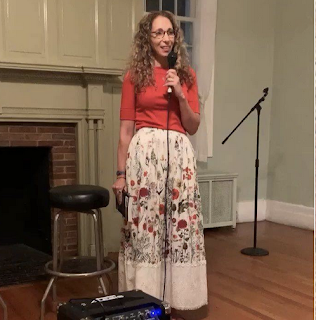
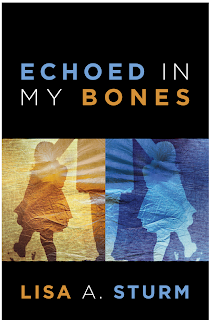
Lisa Sturm's gripping novel is about race, foster care and the traumatic secrets of the past. As a young girl, Lakisha gives up her newborns, one who looks white and one who looks black, into the foster care system. But years later, Laikisha must search for them to save another--and herself.
Here's just some of the praise:
“This uplifting story reminded me that the invisible threads that create a family are often stronger than time, distance, and hardships.”
-- Jennifer Haupt, bestselling author of In the Shadow of 10,000 Hills
"Drawing on her experience as an inner-city psychotherapist, Lisa Sturm reminds us just how much distinct environmental stressors, or advantages, pave our paths in life, and also how profound our need for family is. This well-crafted and well-imagined novel will keep you reading well into the night."
-- Ellen Sherman, Just the Facts and Monkeys on the Bed
Lisa Sturm's short stories have been published in literary journals such as Tulane Review, Serving House Journal, Mom Egg Review, Willow Review, and Turk's Head Review, and in an anthology entitled Sisters Born, Sisters Found (Wordforest Press, 2015). She received the Willow Review Fiction Award and the Writer's Relief Peter K. Hixson Wild Card/Fiction Award for selections from her debut novel, ECHOED IN MY BONES (Twisted Road Publications, 2019), a story inspired by her work as an inner-city psychotherapist.
Thank you so much, Lisa for being here!
I always, always ask this question. What was it that was haunting you personally that propelled you to write Echoed in My Bones?
I suppose, in some sense, I was haunted by former psychotherapy patients whose suffering or faith or resilience or decisions I found deeply moving. For example: There was a seventeen-year-old girl who needed to prepare for the SATs and couldn’t afford a study guide, so I gave her an extra one we had lying around the house. When I handed it to her, she kept running her fingers over the glossy cover and finally shared, “No one has ever given me a brand-new book.” That stuck with me. There was a mother of six who had survived childhood homelessness and sexual abuse and sought therapy because she wanted to ensure her past trauma wouldn’t interfere with her parenting. Her strength was inspiring. I’m haunted by a mother I saw just a few times, who was court-ordered to receive counseling because her husband had injured one of their children while drunk. Child Protective Services warned that if her husband didn’t move out during the investigation, her kids would be taken away—but for some unfathomable reason, she couldn’t ask him to leave. I still struggle with that one. Finally, there was an eighth grader whom I saw after she’d been repeatedly raped by a family member. In foster care, she’d become sexually active with boys in the neighborhood and her foster mom threatened to kick her out. That girl was so sweet and so loveable, I often fantasized about adopting her myself. I’m sure there were others, but those are a few that stand out in my mind.
You’ve written such a powerful and provocative novel about race and family and the choices that we make. Can you talk about this please?
When I worked with these inner-city women, I felt a strong bond. Most of them had no other safe place to share their feelings, and so our sessions were particularly raw. There were certain themes that came up repeatedly: faith, hope, family, abuse, trauma, mistakes and repairs, and unrequited longing for connection. My office was a ten-minute drive from my home, and yet before taking this position, I’d had no idea of the suffering that was occurring practically in my own backyard. I tried to write from a place of caring and compassion, wanted to share what I’d learned about their hardships and how I’d made sense of it. Like Grandma Louema in the novel, I wanted to transmit a message of hope and healing. This story carries with it a wish that all of my “ghosts” find their own place of peace.
What was it like writing this novel? Was there ever a moment when you thought you had lost the story? And are you the kind of writer who plots things out or do you wait for that pesky Muse.
Right from the start, I was clear about the beginning and the end of the novel. It was wrestling with what should be included in the middle that proved difficult. Deciding in what order the story should be told was also quite challenging. The biggest plot shift came during the fifth rewrite (with the help of a wonderful developmental editor, Julie Mosow), when I changed the way Tessa and Jasmine come together. By editing out a few unnecessary scenes, I also gained more space to really explore my characters’ thoughts and emotions. For my next project, rather than waiting for the muse, I’m trying to flesh out all of the backstories and outline each chapter before attempting a first draft.
Can you talk about the great title, please?
Echoed in my bones was always a line in the poem that came to define the various parts of the novel. Once the search for a bone-marrow donor was woven into the plot, echoed in my bones became meaningful on many levels and seemed the perfect title. Fortunately, my publisher agreed!
What’s obsessing you now and why?
Lately I’ve been thinking about former patients who were in law enforcement and others who were in gangs, and I’ve been pondering the way personal history plays a role in decision making, particularly when people are under pressure. My next project is about a therapist, Delia Chase, whose drug-dealing client, Darnell, is murdered on the eve of his escape from gang life. In a desperate attempt to figure out how and why he was killed, Delia recruits another client, a police officer named Jimmy, to help.
What question didn’t I ask that I should have?
Did the question of “cultural appropriation” figure into the process of getting this book published? As I was querying for representation, this question did seem to deter some agents. Fortunately, I found a publisher who understood the special perspective my therapy work afforded me in the creation of this story, and I did enlist sensitivity readers from the community who combed through the manuscript. Because of my deep concern about this issue, the review that gives me the most satisfaction came from The Director of the Irvington Library (located just a few blocks from the clinic where I worked). Once she raved about it and told me she was recommending it to her own book club, I breathed a sigh of relief—and then did a happy dance.
Published on September 17, 2019 13:40
August 27, 2019
Two families, a tragedy that impacts them all over decades, and profound questions about what it means to forgive, to be decent, to grapple with being human. ASK AGAIN, YES is phenomenal and the equally phenomenal Mary Beth Keane is here to talk about it.
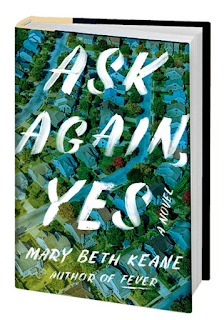
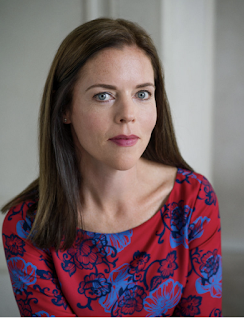
Of course I had read all the raves about Ask Again, Yes. Of course I had it on my pile to read and I knew about Jimmy Fallon's show selecting it. And of course, when I started Mary Beth Keane's extraordinary novel about two families, two young lovers, and a tragedy that spans decades, I was reading until four in the morning. It does what you want a novel to do--immerses you in a whole other world so you fully expect to see the characters. It makes you see the world differently. It's profound and gorgeously written and when I was finished, I knew I HAD to talk with Mary Beth.
So let's look at just some of the raves first:
Mary Beth Keane takes on one of the most difficult problems in fiction – how to write about human decency. In Ask Again, Yes, Keane makes a compelling case for compassion over blame, understanding over grudge, and the resilience of hearts that can accept the contradictions of love."
– Louise Erdrich, winner of The National Book Award for Fiction
“Mary Beth Keane looks past the veneer that covers ordinary moments and into the very heart of real life. There’s a Tolstoyan gravity, insight, and moral heft in these pages, and Keane’s ability to plumb the depths of authentic feeling while avoiding sentimentality leaves one shaking one’s head in frank admiration. This wonderful book is so many things: a gripping family drama; a sensitive meditation on mental illness; a referendum on the power and cost of loyalty; a ripping yarn that takes us down into the depths and back up; in short, a triumph.”
—Matthew Thomas, author of We Are Not Ourselves
“I devoured this astonishing tale of two families linked by chance, love, and tragedy. Mary Beth Keane gives us characters so complex and alive that I find myself still thinking of them days after turning the final page. A must-read.”
—J. Courtney Sullivan, author of Saints for All Occasions
“Mary Beth Keane is at the height of her powers in this novel about the sacrifices we make when we choose to build a life with someone. In Ask Again Yes, Keane tells a story about the fragility of happiness, the violence lurking beneath everyday life, and, ultimately, the power of love. If you’ve ever loved someone beyond reason, you will love this wise, tender, and beautiful book.”
—Eleanor Henderson, author of Ten Thousand Saints
“Mary Beth Keane combines Joan Didion’s exacting eye for detail with the emotional wallop of Alice McDermott. From the ache of first love to the recognition that the people closest to us are flawed and human, Ask Again, Yes is a moving testament to the necessary act of forgiveness. It is heartbreaking, hopeful, and honest.”
—Brendan Mathews, author of The World of Tomorrow
Mary Beth Keane is the the author of The Walking People, Fever, and I am so thrilled to host her here. Thank you, Mary Beth.
I always believe that novels are the result of something haunting the author, some question you just had to explore to try and make sense of it. What was haunting you when you were writing Ask Again, Yes?
I believe that, too, though for me I first have to figure out why I feel so unsettled, and sometimes that takes quite a long time to pinpoint. And then it takes even longer to figure out how to write about whatever I’ve figured out. With this book, I was mostly thinking about love, how for some people it seems easy to nourish even as people age and life changes, but for some people it’s not so easy. I wondered why. I was also thinking about how much we owe our partners and ourselves within a love relationship that is tested. Who do we protect first, and most fiercely?
What I so admired about the novel was how seamlessly it moved forward even as you were using myriad points of views. Are you the kind of writer who maps things out or did the story come to you organically? (Or as organically as any story can come to a writer…)
No, I don’t map anything out. I’ve tried outlining but it feels like writing with a noose around my neck. The prose ends up completely lifeless. I know writers whose work I admire do incredibly well with an outline. With this book, because I didn’t know quite how long it would cover or how much it would pull in, I’d sort of begin a writing week with a scene that felt like it would have some energy, write through it until it felt complete, and then stand back and try to figure out where it fit. I probably had half the book and a lot of discarded pages before I began to see the shape. For me the first half of a book usually takes YEARS to get down, but then the second half comes quickly.
This incredible story flowed mostly chronologically, and as I was reading, I wanted to ask you how you feel about backstory and its uses and discontents?
It took me such a long time to figure out that telling this story chronologically would be the way to go, and it’s sort of funny that a most traditional approach ended up feeling revolutionary. In the first few drafts, I began almost everywhere else. I began with Peter in crisis in the present day and then circled back to indicate what sort of childhood he had. At one point I began with Kate and Peter reconnecting in college, and sort of moved backward and forward simultaneously. I tried writing in the first person from Kate’s point of view, beginning on the day she meets up with Anne for the very first time after everything that happened. But every way aside from the one I ultimately went with relied far too heavily on backstory. I don’t mind a little backstory, but whenever I stay in a flashback for too long – both when I’m writing and when I’m reading – I wonder why the story isn’t just set back there. With this story and these characters, I felt like I had to bring the reader through their lives in order to feel the full impact of the end.
The challenge with that, however, was how to guide the reader through the mundane years without losing their interest. Peter and Kate have two babies, they buy a house, they pick out Christmas trees and tend to their lawns and balance their checkbooks. I wanted the reader to see that they do these normal, domestic things, but on the other hand too much of that is boring. Once I figured out we could see them moving through time sort of vis-à-vis Anne, it was lock unlocking the solution to the story.
My mother was perhaps bi-polar (she never got diagnosed); one of my best friends moved to Los Angeles and had a psychotic break and has been in and out of mental institutions. So I was acutely interested in your portrayal of mental illness and how you got it just right. The stunning surprise of a cruelty, the way the dots never quite connect, and of course, the stigma, especially back then. And though Anne is responsible for terrible, tragic happenings, we still feel incredibly sympathy for her because I think you’ve rendered her so exquisitely. (That scene with her in trying to order food was sensational.)
What I also loved was how every event had ripples like skipped stones, impacting every character in profound ways, through the years. Is it right to say that everybody is a part of everything everywhere? (I fear I am quoting Donovan, but no matter…)
Yes, I think so. And that’s both incredibly moving (to me) and frightening. We work so hard in this life and yet so much of it seems determined completely by happenstance. Who we meet and when and how. There were several important poems and passages that I read almost daily when I was writing this novel, and one of them was “The Continuous Life” by Mark Strand. That line, “…one thing leads to another, which leads to another” and that the luckiest thing is having been born. He’s right. That is the luckiest thing.
I absolutely love the syntax of the title! Somehow adding that Yes at the end and the comma before the “yes” layers on the meaning for me and makes it unforgettable. I know that titles can be marketing decisions, as are covers, but what does this title mean to you?
This title was always the title, and I worried I’d have to fight for it but I really didn’t. It’s from Molly Bloom’s soliloquy at the end of Ulysses. As I wrote in the previous question there were several touchstone passages that I returned to over and over whenever I felt myself getting off track, and that was one of them. I read Ulysses in college, and it was one of those lightning strike moments. I understood that book right away, on what felt like a cellular level. And something magical happens when it switches to Molly’s point of view at the end. It feels to me that so much of their story, their marriage, their love, is completely run out. They’re petty. They’re cynical. But at the end, when Molly remembers their beginning, it was like someone turned a light on in the room and I found a piece of the story that was missing. Their history is long and the beginning still matters. Their love is stronger than we think it is up until that moment. Even though their story is quite different, that’s true for Kate and Peter, too. The comma is mine.
You’ve written two previous remarkable novels, The Walking People, and Fever, which I raved about for the San Francisco Chronicle. Do you feel that every book progresses your writing, that there are definite lessons you can use, or do you, like me, feel that as soon as you start a new novel you have writers’ amnesia and it’s like writing your very first novel?
Oh, I’m totally with you on this. I compare it to raising children. One would think that having one kid would teach you how to raise another but so far it really hasn’t, at least for me. They arrive so completely different from one another that you have to start from scratch with each one. I struggle so much with time and structure and each story demands it’s own. On the other hand, I do think that I’ve grown less tentative with each book and I think that must come from experience. There really is something to a woman approaching (arriving at?) middle age and not giving a shit anymore. When I wrote The Walking People I was so conscious of my parents potentially reading it, that whole generation. I felt like I was sort of looking over my shoulder and wondering what people would think. Now I don’t think that way. I write what I want to write, and that’s been a powerful thing for me. I just feel sure someone out there will connect with it as long as I’m honest and sort of lay myself bare.
What’s obsessing you now and why?
Midlife crises. Are they real? Am I having one? What are they really about? How are they expressed from person to person. In my twenties and thirties I sort of rolled my eyes at the whole idea, but now I don’t. (In general, I think I’m getting less judgmental as I get older). Even the classic old guy in a Masarati mid-life cliché – I think there’s possibly real pain there, and grieving of a sort, and maybe joy, maybe freedom. I don’t know, yet, but I’ve been thinking about it.
Published on August 27, 2019 09:47
August 23, 2019
The wondrous Marcy Dermansky talks about VERY NICE, writing and not writing, and getting more celebrities like SARAH JESSICA PARKER to read her book.
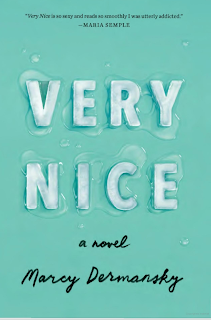
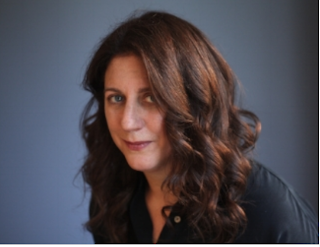
Marcy Dermansky is really one of my favorite writers. I went nuts for Bad Marie, and she's also the author of the critically acclaimed novels The Red Car, and Twins. And her new novel, Very Nice, about MFA writers, bad behavior, sex, sun, and more is being so widely praised it needs its own TV station. (I'm not sure what that means but I wanted to write it.)
Bad Marie was a Barnes & Noble Discover Great New Writer's Pick, a finalist in the Morning News Tournament of Books, and named one of the best novels of the year in Esquire.Her first novel Twins was a New York Times Editor's Choice Pick.
Marcy has received fellowships from The MacDowell Colony and The Edward Albee Foundation. She is the winner of the Smallmouth Press Andre Dubus Novella Award and Story Magazine Carson McCullers short story prize. Powell's Bookstore named Marcy a Writer to Watch Out For.
So now let's rack up some of the raves that her new novel, Very Nice, is racking up:
“A story of sex and intrigue set amid rich people in a beautiful house with a picturesque swimming pool… This is a more serious book than it might seem at first glance. It’s like she’s served us a cupcake that turns out to be nutritious. I won’t spoil the book’s conclusion, not because I dislike spoilers but because I’m in awe of it… Okay, one spoiler: The last word of the book is ‘laugh.’ I bet you will.”
–Rumaan Alam, The Washington Post
“This is a vicious little novel, smart, efficient, mean, full of terrible people behaving terribly, incisive observations about a certain class of people pretending they had no hand in the state of the world. Writers don't come off too well, either. Absolutely delightful.”
–Roxane Gay, author of Bad Feminist and Hunger
"If you are looking for a smart yet wacky summer diversion, a sendup of PC pretensions, a book that will make you both laugh and gasp out loud, dive between the enticing aqua covers of Very Nice."
– Marion Winik, Newsday"A messy, sexy, super fun drama that unravels over the course of one summer… Impossible to put down."
—Buzzfeed
"This darkly funny book vies to answer the age-old question: Just how huge is our collective appetite for tales of male novelists behaving badly? Uproarious."
–Entertainment Weekly
“Sly, deceptively simple and thoroughly seductive... Bouncing between points of view, Dermansky confines herself to snappy, brisk paragraphs and short sentences, with much of the psychic action between the lines. Her sharp satire spares none of the characters and teeters brilliantly on the edge of comedy and tragedy.”
—Publishers Weekly (Starred Review)
“Subtly riotous… Dermansky has cultivated a style marked by humor so dry it threatens to ignite on the page. The assured deadpan prose belies the characters’ chaotic inner lives. It’s a precarious balance, but Dermansky uses deft plotting and absurdist ironies to both shock readers and probe psychological nuances… Very Nice is a wickedly fun and emotionally potent farce about the often-frustrating fluidity of our relationships to one another and ourselves. Along the way, Dermansky skewers Wall Street and the Iowa Writers Workshop—students “tried so hard” and “wanted so much praise”—but her real battleground is the beating heart.”
–Michelle Hart, O Magazine "This [is a] sexy summer novel, in which writers and other deviants (including multiple poodles) swim and sleep together and get jealous and go about their tragicomic lives. What else is there to do, after all?"
–Lit Hub
“A sardonic skewering of self-aggrandizing MFA programs, investment banking, and ‘nice’ wealthy suburbs that tend to have seedy secrets bubbling right underneath their shiny veneers.”
–Thrillist
"Fans of situational comedies and rom-coms should pre-order this hilarious novel from Marcy Dermansky… It features a small cast of wickedly funny characters and a plot straight out a Shakespearean romance."
–The Today Show
"Very Nice is so sexy and reads so smooth that I was utterly addicted. Trenchantly observed and darkly funny, it will stick with you long after you finish its final, ferocious sentence."
—Maria Semple, bestselling author of Where’d You Go, Bernadette?
Thank you for letting me pester you with questions, Marcy!
I was so knocked out by Bad Marie, and Very Nice knocked me out even more. (Not to say that I didn’t also love The Red Car and Twins. I did.) Did you find that when you were writing Very Nice you used lessons you had learned from Bad Marie—or do you, like me, have writers’ amnesia, where everything is brand new every time?
Thank you! I think anyone who had read all of my novels should collect bonus points and they should add up to something special. A new car. I could send you a poodle card. I made a painting of Princess the poodle and it now a beautiful thank you card. This is a serious offer.
Unfortunately, I don’t feellike I have learned anything from one novel to the next. I must have writers’ amnesia, just like you. Because beginning is always the most daunting part to me. And what you wrote in one book is meaningless in the next. I am also at my happiest when I am in the middle of a novel, typing typing typing.
I always want to know what was haunting a writer into writing a particular book. What was haunting you?
Very Nice started as a short story, what is now the first chapter of the novel. A student who seduces her professor. I have always been interested in this subject -- it’s icky and strange, the power dynamic and I think it happens all the time. Or used to. So I wrote the story, also titled Very Nice, finished a draft in two sittings, and then I was done. I hate that. And so after I polished the story, I kept going, switching POVS, and all of a sudden I was writing a novel. I hadn’t planned it.
Your writing’s been lauded as sexy, funny, super smart. So while you are writing, are you aware of this? Do you make yourself laugh, or is this very serious business for you, getting everything right on the page.
I am so unaware of what I am doing while I am writing. It’s nuts. This book is so full of sex and I don’t think I was properly understood this until after the book was published and I had to pick scenes to read out loud. My father always told me to put MORE sex in my book. That sex is what sells. He died while I was writing the book and I think I had his advice somewhere in the back of my head. I really was writing this book for my Dad. I had been with him at hospital when I got a call from my agent, telling me how much he loved the pages I had sent him. I hadn’t been expecting this response and it was so great to have good news to give my father and so I told him and he was thrilled. I know he would be pleased, about all of the sex in Very Nice. Funny, right? I finished the book quickly. I think it was my distraction from grieving. I read that Elizabeth Gilbert did the same thing with City of Girls.
I don’t try to be funny. If I tried, I don’t think it would happen. I am aware of moments writing when something clicks, when a sentence comes out just the way I want it, or a chapter ends with the perfect line, and I feel glee. Or a coincidence happens – like when Zahid, the writer, and the character of Mandy, the pilot, meet on an airplane – and neither of them is aware of their connection to each other. I think that is why I write. I am not about perfection and agonizing. I don’t want to spend three hours on a paragraph. I want to write it in five minutes if I can. Not that that always happens.
The agony for me, really, is when I am not writing. The procrastination can be insane.
So much of Very Nice is about race, money, AND a mother-daughter love triangle. But not only do you have myriad themes, but myriad characters. How did you keep track of the structure? Do you map everything out or do you just hope the Muse is there to help?
It definitely got complicated with five POVS but the abundance of POVS also gave me a built in structure. Rachel (student), Becca (mother), Zahid (writer/professor), Khloe (subletter/twin sister of Kristi, Zahid’s best friend). And then repeat. Finish the cycle, repeat. On two occasions, Jonathan (father) bursts in; it’s good that I can break my own rules. Sometimes when the story got complicated, I would find that I would have to move backwards, add things, fix things, so that the plot made sense. I never write straight to end but constantly revise as I go.
What’s obsessing you now and why?
Right now, summer is ending, and I only have so many more days left to swim outside in the public swimming pool. I will have to stop what I am doing and make sure I get to the pool to swim my laps outside.
I also try to stay abreast of current events and somehow not be obsessed. I truly don’t want to be obsessed with the 2020 election while at the same time I want to work hard for the only possible outcome. I don’t want to forget about immigrants in detention camps when the story is no longer front page news. I want to keep protesting and donating money and calling my reps and get a Democrat into the White House because, wow, it is bad out there. I have also had some readers on Goodreads say they wish politics hadn’t made it into Very Nice, but if I am thinking about the state of the world, so are my characters.
What question didn’t I ask that I should have?
What celebrity just endorsed your book on Instagram? Why sure, I can tell you that. Sarah Jessica Parker. OMG was the first thing I thought and I don’t say OMG. I was at a book club the day I found out and I told the group and they started to spontaneously applaud, as if I had won an award. It was nuts. It also makes me think about how much we revere celebrity. Now I want more celebrities to read VERY NICE.
Published on August 23, 2019 14:42
July 31, 2019
Daphne Kalotay talks about her astonishing new novel Blue Hours, culture class, privilege, and the deep bonds of female friendship
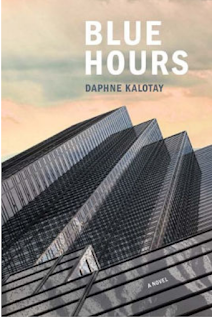
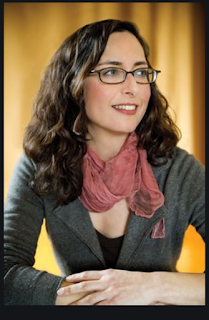
Daphne Kalotay is the author of Calamity and Other Stories, short listed for the 2005 Story Prize, and her debut novel, the national and international bestseller Russian Winter, which won the 2011 Writers’ League of Texas Fiction Prize, made the long list for the IMPAC Dublin Literary Award, was nominated for the Dayton Literary Peace Prize, and has been published in over twenty foreign editions.
Daphne’s second novel, Sight Reading, was a Boston Globe bestseller, a finalist for the 2014 Paterson Fiction Prize and winner of the 2014 New England Society Book Award in Fiction. “Relativity,” from her collection-in-progress, was the 2017 One City One Story Boston selection. Daphne lives in Somerville, Massachusetts and teaches at Princeton University’s Program in Creative Writing.
Her latest novel BLUE HOURS is just mind-bendingly great. Just look at these raves:
“Rich and layered ...Kalotay’s sense of place — the physical geography as well as emotional landscape — is as savvy and sharp as her portrait of the friendship between these two women. The novel unfolds cross-continentally, cross-class, cross-hearted, moving from New York City in the early ’90s to Afghanistan in 2012, and in Kalotay’s skilled hands the novel is both richly human and deeply political.” —Nina MacLaughlin, Boston Globe
“A sharp portrait of an isolated woman seeking to understand a defining relationship of her past. ...The novel successfully raises important questions about decisions made on both intimate and global levels, and their consequences.” —Publishers Weekly
“What a terrific novel. Only a book this good could move so well from the intensities of youth to the disasters of the global world—love’s joys and miscalculations from the East Village to Afghanistan. Beautifully written, Blue Hours did that rarest of things, it took me places I never expected to go.” —Joan Silber, NBCC award-winning author of Improvement
Thank you so much for being here, Daphne!
I always think writers are somehow haunted into writing their books—what was haunting you?
At first, it was simply the ghost of New York City in the early 90’s—the struggles of that time (AIDS, the recession, the first Gulf War) along with the youthful energy and blithe naivete, which really does seem lost forever, swept away by the economic boom that put the city out of reach for young hopefuls and by, more broadly, 9/11 and our country’s wars in the Middle East. Then it was my dear friend Xavier, who works for the Red Cross, telling me his headquarters in Libya had been bombed; that was in 2012, less than a year before I heard on the news about an American serviceman being held by the Taliban. I started thinking about these two types of overseas work—military and humanitarian aid—and ideas for the book began to percolate.
What I loved so much about your book was how it zoomed from NYC to Afghanistan, from issues of race and class and how they impact our lives. This seems especially timely today.
I’m struck by the ways that wealth and whiteness cocoon so many of us (I’m no exception) from facing truths about Western imperialist behavior, including our (my) own. I would include in this our very American tendency to ignore what might be happening in non-Western, non-white countries—even when it’s our own country’s foreign policy shaping these countries’ events. In terms of class, I’m struck by the fact that so many people who join the military do so for lack of other options, while the wealthy can avoid it, and the way that this inequality probably warps our nation’s policy decisions. I wanted to show the consequences of these decisions at the granular level, through personal lives and loves.
I also loved the friendship between two very different women—and the stakes of that friendship.
Girls often look to other girls and women for examples of how to be, and for Mim, Kyra has the added glamour of being rich and seemingly carefree, while simultaneously sort of slumming it as a dancer in the Village—but really the qualities that define Kyra are compassion and clarity of vision. She’s one of the people who help nudge Mim into a greater awareness of herself and the world around her. The irony is that while Mim sees Kyra as the brave one, Mim herself does something just as gutsy and generous when she decides to go help find her.
What kind of writer are you? What’s your process and how do you wish it were different?
I’m a terribly impractical writer. My process is basically to sit down and open an notebook and write down thoughts and ideas, and at a certain point, when I worry I’m going to lose the notebook, I type it all into my computer into various not very organized documents, hoping some are enough of a kernel of something—a story, a novel—for me to continue working on them. If I need to learn more for a project, I do research by reading, seeking out experts, watching documentaries, anything to gain information that will allow me to write with some sense of authority. As for what I wish I did differently: I wish I could begin with a concept that was saleable as a project and go from there.
What’s obsessing you now and why?
Right now, I’m obsessed with the migrant ships that are being turned away from port after port, and what it must feel like to have fled one’s country and risked one’s life and now be literally and metaphorically adrift. My father was a refugee, so part of this is personal, but I’m also compelled by the sheer drama of these stories. I was captivated a few weeks ago by the rescue ship captain who finally gave up and docked at Lampedusa and was immediately arrested; I’m interested in the quandary of all parties involved—the migrants rescued at sea, the volunteers who rescue them, and the countries who feel they’ve been pushed to their limits. What question didn’t I ask that I should have? Maybe what I see as my job as a writer?
To keep my readers engaged enough that they keep turning the pages, while creating something vital and meaningful enough to be reread.
<!-- /* Font Definitions */ @font-face {font-family:"Cambria Math"; panose-1:2 4 5 3 5 4 6 3 2 4; mso-font-charset:0; mso-generic-font-family:roman; mso-font-pitch:variable; mso-font-signature:-536870145 1107305727 0 0 415 0;} @font-face {font-family:Calibri; panose-1:2 15 5 2 2 2 4 3 2 4; mso-font-charset:0; mso-generic-font-family:swiss; mso-font-pitch:variable; mso-font-signature:-536859905 -1073732485 9 0 511 0;} /* Style Definitions */ p.MsoNormal, li.MsoNormal, div.MsoNormal {mso-style-unhide:no; mso-style-qformat:yes; mso-style-parent:""; margin:0in; margin-bottom:.0001pt; mso-pagination:widow-orphan; font-size:12.0pt; font-family:"Calibri",sans-serif; mso-ascii-font-family:Calibri; mso-ascii-theme-font:minor-latin; mso-fareast-font-family:Calibri; mso-fareast-theme-font:minor-latin; mso-hansi-font-family:Calibri; mso-hansi-theme-font:minor-latin; mso-bidi-font-family:"Times New Roman"; mso-bidi-theme-font:minor-bidi;} .MsoChpDefault {mso-style-type:export-only; mso-default-props:yes; font-family:"Calibri",sans-serif; mso-ascii-font-family:Calibri; mso-ascii-theme-font:minor-latin; mso-fareast-font-family:Calibri; mso-fareast-theme-font:minor-latin; mso-hansi-font-family:Calibri; mso-hansi-theme-font:minor-latin; mso-bidi-font-family:"Times New Roman"; mso-bidi-theme-font:minor-bidi;} @page WordSection1 {size:8.5in 11.0in; margin:1.0in 1.0in 1.0in 1.0in; mso-header-margin:.5in; mso-footer-margin:.5in; mso-paper-source:0;} div.WordSection1 {page:WordSection1;} </style> -->
Published on July 31, 2019 11:45
July 6, 2019
A brilliant historical novel that is also a legal thriller: Award-winning David Marlett talks about AMERICAN RED (great title, no?)
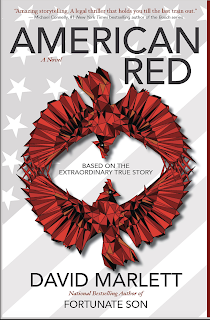
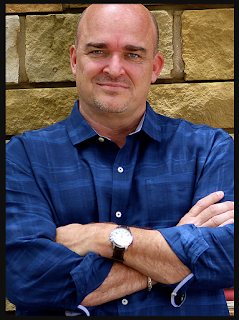
David Marlett is an award-winning storyteller and bestselling author. David is a professor at Pepperdine Law School, has been published in a number of magazines, was Managing Editor of OMNI Magazine, and regularly guest-lectures on story design. He is the father of four, a graduate of The University of Texas School of Law, and currently lives in Manhattan Beach, California. AMERICAN RED, an historical legal thriller, is his second novel. (The highly praised Fortunate Son, was his first.) How could you not lvoe a novel that features both Clarence Darrow and the Pinkertons?
I'm so honored to have him here. Now take a look at some of the praise:
“Amazing storytelling. A legal thriller that holds you till the last train out.”
— Michael Connelly, #1 New York Times bestselling author of the Bosch series
“A cracking good tale! Part love story, part espionage thriller.”
— Jacquelyn Mitchard, New York Times bestselling author of The Deep End of the Ocean
“Vivid, well researched and told bare-knuckled across a tapestry that is both broad and nuanced...with characters who are outsized and real.”
— Mark Sullivan, international bestselling author of Beneath a Scarlet Sky
“A gripping story…unforgettable characters…fascinating.”
— Adam Benforado, New York Times bestselling author
“A stellar novel of intrigue, adventure, engaging characters, and a fascinating backdrop. A true gem of a story.”
— Steve Berry, multiple New York Times bestselling author
“An important story of intensity and emotional pull. Be prepared to be captured by this gifted storyteller.”
— Jeff Kamen, Emmy-winning NPR and NBC journalist and author
I always want to know what is haunting a writer into writing a particular book. What was haunting you?
I love this question. It is a pleasure to talk with someone like yourself who, as a fellow novelist, clearly understands the writing mindset/process.
What originally fascinated me was an overarching question: At the turn of the last century, in the wake of Marx, many countries were beginning to gravitate toward national socialism and in some instances communism. And in many it took root—perhaps Russia most notably—obtained through bloody revolution. So why not here? I was fascinated by what it is about America—the people and the land, the culture and values—that led to our zealous adherence to capitalism, revulsion for communism, and our acquiescence to the lighter form of socialism that we have today. After all, America was heavily populated by people who—were they to have still lived in their countries of origin—would have been embracing if not fighting for national socialism, and perhaps even communism. So why did they, once here, go a different route? That was the fascination that sparked me to the story that would eventually become American Red—and drove me throughout the research and writing as I began to see glimpses of answers in the mix of our immigrant heritage, the wildness of our west, our religious fervor, the prospect of opportunity, and the evolution of our laws.
But you asked what was haunting me that led to American Red. The law is a fragile, imaginary thing held together only by the collective will of the society in which it inhabits. And the humans that comprise that society have proven, time and again, to be in self-entangled conflict with their nature—prone to great love and sacrifice while being vulnerable to an instinct for violence and extremism. We are no different today. As we were not a hundred years ago. So, I would say that it was that precarious duality, that swirling conflict with the personal and societal self, governed only by a collective belief system known as the law, that haunted me—and haunts me still.
There is something so fascinating to me about a historical novel which is also a legal thriller. Perhaps it’s because the law is a product of the times’ mores, pretty much, so we get that whole extra layer. But American Red is also a deeply moving love story! How difficult was it balance those three different kinds of novels into one extraordinary whole?
First, I am flattered that you might think I found some balance of the three. I hope so. Yes, it was indeed a challenge. As for it being historical fiction, for me that is pure fun. The research, the time-travel. Going into those rooms, onto the streets, trying to inhabit the space and moment and bring the reader with me. Seeking out those elements that give the moment texture and immersive relevance while also propelling the story. This is the area of the three where I have to do the most editing. American Red is already a long book…woe to the reader if I hadn’t had a good editor!
As for the legal thriller through-line, that is more of a philosophical study for me. In fact, at its core, the legal aspect isn’t a story of the past, but only happens to be told there. Indeed, as the bulwark of our current legal system is founded on judicial decisions and axioms born decades if not centuries ago, the legal machinations in my novels speak as heavily about who we are today as they consider the events of the past. (It was that element that led me to my first historical legal thriller, Fortunate Son, which tells the amazing true story surrounding a 1746 trial that is the basis of our modern attorney-client privilege.) In addition, the modern reader is familiar enough with the legal system, from the crime to the investigation to the trial, that those processes can serve as a guide rope through what—in the instance of American Red—can be a complex plot.
And, ah yes, the love stories. That is what made me write American Red. Not long after Fortunate Son was published, I read Big Trouble, the deeply detailed non-fiction tome by J. Anthony Lukas that examined the events leading to the 1907 murder trial of William “Big Bill” Haywood. Though it sparked my interest in the events, the basic humanity, it lacked sufficient heart to inspire me to tackle the narrative as a historical novel. So, a couple of years went by, but I kept returning to the fascinating events, hoping to discover the soul, the spark that might conjure it alive. It wasn’t until I researched Neva, Big Bill’s wife, that I began to see a story that I wanted to tell. Unfortunately, little was recorded about the women in these very male-dominated events, but I began to gather bits and pieces. Eventually, I came to better understand the relationship between Neva and her sister and her husband, her journey with polio and her faith, and saw glimpses of her lovely relationship with another man. Also, anecdotes began to develop which would become Jack and Carla. With those two love stories, I knew it was a book I had to write.
This book was so much to read, with delicious and specific details lighting up the book like electric sparks. What was your favorite character to research? (I loved Clarence Darrow who was not as gold-hearted as he has been made out to be, and of course, the infamous Pinkertons) and why?
The humanity of Clarence Darrow was indeed interesting. His extraordinary legal talent was clearly rooted in his ability to connect with others, to understand the heart and mind of juries, to use language to manipulate and motivate belief systems regarding right and wrong. And I enjoyed exploring his conflicted morals—his willingness to compromise his values, his advocation for the downtrodden while also representing some of the greatest terrorists in American history. (In Angeles Los, my next historical legal thriller based on a true story—a continuation of some of the characters in American Red—Clarence Darrow defends the bombers of the Los Angeles Times only to get himself indicted for a felony.)
But to answer your question about my favorite character to research, I would have to say it was the aging Pinkerton, Chief Detective James McParland. (I would say it was Neva, Nevada Jane Haywood, as she was a favorite. But there was less to research as the historical record is more circumstantial about her, rather than direct.) McParland was an interesting man—timeless in his humanity while grappling with the passage of time. When we meet him in 1906, he sees his career nearing its end, perhaps his life—a life of rich stories all behind him then, all embedded in the 1800s. Technology and society are passing him by. But he wants one final accomplishment to cap off a very storied career: to bring down Big Bill Haywood. I admire him yet feel his distance—from his wife whom I made sure we never meet, to the young men whom he knows will soon replace him. Researching his background and coming to understand why he was willing to do what he did, was quite enjoyable.
What surprised you in your research? Did any research derail what you thought was your plot?
The only major research-induced surprises came in first discovering the audacious events themselves, those that would comprise the spine of the plot. In other words, no surprises in the research derailed a previously anticipated plot line, though a few altered or led it. There are so many crazy actual events in the story, but little in the historical record connects them narratively. So a fair amount of my work was to imagine the bridge, what motivated characters from point to point. For example, when I learned what Adams did to that family in San Francisco, I knew I had to take the story there. It then became a task to give the story the framework to make that happen. Other research surprises ignited opportunities for detail and scene placement but didn’t alter the overall plot. Such things include the opening of department stores, the recent San Francisco earthquake and fire, the museum and zoo in Denver, early auto races, the advent of the Maxim machine gun, the touring theatrical performance staring Ethel Barrymore, and many others. Perhaps the most extraordinary surprises which definitely informed the plot were what Clarence Darrow did regarding Adam’s testimony, and what became of Big Bill Haywood. (Hopefully I am being sufficiently cryptic so as not to give anything away.)
I always want to know what you took fictional liberty with and why?
Well, this is a bit of the magician showing his tricks, so I am somewhat hesitant to go into much detail. But I’ll take a stab at it. First, I’ll say that my historical novels are intended to be modestly impressionistic paintings—leaving the real-life painting of the events to historians and non-fiction writers. That said, the vast majority of the characters in American Red were real people, and I tried to be true to what is known of their personalities and styles. (I list at the end of the book all of the actual characters, leaving the reader to induce who was invented.) And the real characters are doing things close to what they actually did—at least with regard to the major plot events. And in some circumstances, where there is written evidence (a trial transcript or other contemporaneous writing), they are saying what they actually said, or close thereto. The primary fictional liberties I took were in the timing of the events. I condensed some elements to fit within the time frame of the book, but hopefully not so such much as to violate the meaning, importance, or relevance of the event itself. For the characters whom I invented, they are inspired by actual people (usually an amalgamation of multiple actual people) but were dramatized to serve the story.
And I also want to know about the title—how and why you chose it.
First, I wanted a name that was a touch abstract, rather than on point, to better align with my style of historical fiction being similarly impressionistic. That said, the “American” part was clear to me from the beginning of the name search. As I mentioned, an early curiosity of mine was how Americans uniquely engaged with the pressures toward socialist revolution taking hold in other major nations at the time. Also, the story examines the American criminal justice system at an inflection point in its evolution. And the plot involves a number of archetypal Americans and American institutions, including Clarence Darrow and the Pinkertons. As for the “Red” part, it seemed ideal, being such a seminal stand-in for blood, passion, fire/explosion, anger, love, life, and socialism (albeit more for communism than socialism). And by modifying it with the word American, I like the implicit suggestion that perhaps our shade of red, in its representative meanings, is unique. And finally, the underlying heart of the book along with the representative nature of the title informed my abstract design of the “red cardinal at war with itself.” So, there you have it: American Red.
You do so many different kinds of writing. Do you have a method and does it vary from fiction to nonfiction to scripts?
My first thought in response to this interesting question is, “Not really…writing is writing. I just jump in and get going.” But in truth, that’s probably only accurate about non-fiction. To write fiction I have to take a journey. I have to teleport into the environment and exist there. Sit in it. Feel it. Listen to the people speak. Smell the room. Especially for historical fiction. Over the past couple of years, my kids received this response a few times: “I’m sorry, what were you saying? I was still in 1907.” Or, “Don’t text or call me unless it’s an emergency. I’ll be in 1907 most of the day.” For historical fiction I usually begin with a caffeine surge, both literally and figuratively—with the figurative being to pick up a book I’ve been using as reference and flip through it. Or, more likely, I’ll go back and read the previous day’s work and let it ramp me into the action of the story. Then I just let go and write as it flows, fairly unconcerned with length or even structure sometimes. That said, I do enjoy using historical detail to slow myself down…to stop and research how that wall telephone worked, the fabric of her dress, the explosive yield of three sticks of dynamite, or if the derogatory word “gollumpus” was in use at the time.
Screenwriting is more methodical, more prone to bursts, more dialogue centric. I know the scene and I slowly shape it as I go, continually trimming lines. But I am acutely aware that the reader of the script is not the audience, but rather it is the producers/actors/director. So, that informs the writing—its need to adhere to a set of guidelines.
What’s obsessing you now and why?
I’m currently deep into my next historical legal thriller, Angeles Los, which takes place in 1910 and 1911 in Los Angeles and continues some of the lead characters from American Red, including Jack, Carla, and Clarence Darrow. Angeles Los is based on the true story at the intersection of the first movies made in Los Angeles, the murderous bombing of the Los Angeles Times, and eccentric Abbot Kinney's "Venice of America" kingdom. Like American Red, Angeles Los will also be operating on three levels: a historical look at the social fabric that made Los Angeles—a legal thriller of the terrorists’ murder trial wherein Clarence Darrow himself was indicted—and a love story focusing on the challenges of young marriage.
What question didn’t I ask that I should have?
My goodness, I think you’ve covered it. That said, had you asked about other media forms for American Red, I would tell you that the audiobook is currently in production, and film rights discussions are underway for a premium series.
Published on July 06, 2019 08:45
A brilliant post-apocalyptic novel that also is a love story dazzling with hope: Kimi Eisele talks about THE LIGHTEST OBJECT IN THE UNIVERSE
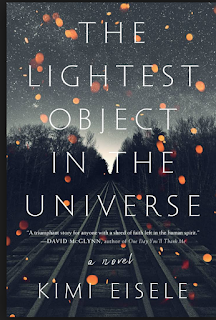
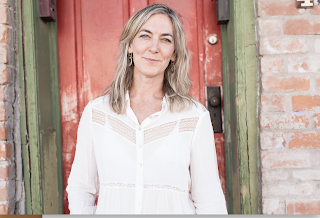
I'm always dazzled by debuts (nice alliteration, right?) and Kimi Eisle's THE LIGHTEST OBJECT IN THE UNIVERSE is absolutely glorious. Gorgeously written, unnerving, and also one of the most moving love stories I've read. I'm honored to host her here.
P.S. come to The Strand in Manhattan on July 30 because I will be interviewing Kimi.
Here is just some of the praise:
July 2019 INDIE NEXT Pick (IndieBound)
Barnes & Noble Discover Great New Writers Summer 2019 Selection
Powell’s Books’ We Can’t Wait: The Best Reads of 2019
Readers’ Digest 15 Best Summer Books to Read in 2019
I always want to know what was haunting you into writing this novel, what was the why now moment as to writing this story. Was there a question you were trying to answer?
Before I wrote THE LIGHTEST OBJECT IN THE UNIVERSE, I had been struggling to write nonfiction essays about American exceptionalism and what it meant to live in a superpower country and benefit from some of the privileges that can offer. The US was at war with Iraq over non-existent weapons and greed and I knew about the long history of US economic imperialism and US support of totalitarian regimes in Latin America and elsewhere. It was difficult to reconcile my privileges as a white woman with an education and status that had enabled me to view and learn about this unevenness with what that unevenness meant for millions of people. Meanwhile, the US remained a kind of beacon—dare I say dream?—for so many I people I’d met across the border to the South.
The essay I was trying to write went on and on and on and never found coherence. So I decided to hand over the struggle to fiction.
On a personal level, I was trying to answer a question about how to live with this contradiction—knowing my privilege and comfort rested on the disadvantage, discomfort, and sometimes despair of entire global regions. On a larger level, the question became: How might we re-envision or rebuild America, once it came crashing down?
What I so loved about this novel is that even though it’s marked as dystopian, it didn’t really read that way to me. It seemed more real, more ground in human drama, and that was part of my delirious delight in it. Was this your intent?
Before I began the book, we lost a dear family friend to cancer. We visited her husband in New York City from time to time. One evening he excused himself from the table to call to someone in California he’d met through an organization that connected bereaved spouses for phone conversations. I don’t think it was a romantic connection, but I was struck by the intimacy of it, and how he was finding comfort there. Sorrow is solitary but often what keeps us going is human connection.
Also, I had worked with a lot of young activists and recognized their zeal for wanting to make the world more just. I began to wonder what would happen if the chipping away at dominant structures actually worked. What would the activists do if the world they wanted to topple actually toppled? That felt like a personal question as much as a political one.
I was less interested in the mechanism of collapse than I was in how a shared catastrophe might bring make us kinder—or not—towards one another. I thought a lot about the personal losses we experience in life—deaths, of course, but other disappointments and failings also—and wondered how those losses would be re-scaled in the wake of a national or global unraveling. It seemed unlikely that personal grief would dim. But maybe it could expand in some kind of meaningful way. So yes, the personal dramas and sorrows were always forefront for me. Also, I knew from my review of the literature that most apocalyptic stories were about gloom and doom. Cormac MacCarthy’s The Road came out early on in my process, and I thought, Oh crap, how can I compete with that? But after reading it, I thought, Yay, my book is nothing like this. My book has light! It really does. In fact, for a long time there was so much light that friend-readers said it was “too Sesame Street.” I had to keep adding more and more menace, right down to the last edits.
Also, speaking of drama, since one of the perspectives comes from a teenaged girl, there’s a moment to ponder the realities of getting your period in the wake of a systems collapse. I mean, you wonder, right?
I loved the structure, the way we had the lynch pins of Beatrix and Carson on opposite ends, moving toward each other, and then there was Rosie’s story. Did you always plan the structure this way? When I think about it, it’s a very clear narrative line, but when I read it, it felt so abundantly rich.
From the start, I knew there were two protagonists—Beatrix and Carson—at opposite ends of the country, in part because of that bereavement phone service. Early on in my process, I remembered the lovers in Charles Frazier’s Cold Mountain and re-read it, realizing its structure was similar and could be useful. I even found the Cliff Notes online and printed out the plot summaries for every chapter, just to understand better how it worked. I was such a fiction novice—and still am. What propels me are pretty sentences and characters, not plot. I often joke that I chose way too complicated a story for my first novel and would have been better off writing simple tale, say, about a girl and her dog. I remain forever indebted to Frazier for writing Cold Mountain, which taught me so much.
Rosie emerged during the writing and became more and more significant with each draft. A key conversation with a friend one night at a bar finally taught me what fiction could do. Without giving too much away, my friend asked about Rosie’s journey and we ended up discussing the geography of the Sierra Nevada Mountains. I realized the power I had to make the seemingly impossible possible and that “far-fetched” sometimes just means we can deliver the payoff readers of novels so often want.
What kind of writer are you? Did the story slowly unfold, or were you writing, writing, writing, and then you discovered the story. And can you talk about what you are writing next? (No problem if you can’t. I always get tongue tied and stubborn when asked this.)
I’m the kind of writer that delights in the blank page and what unexpectedly appears there. One of my best writing days was meeting a tribe of orphan girls who’d escaped their group home to take up residence in a circle of abandoned train cars. (Perhaps I was summoning The Box Car Children?) I hadn’t planned them, they just showed up and I loved them. They got edited out of the book at some point, except for a small scene, but I still love them and loved writing them.
I knew the ending all along but was open to being led elsewhere. I think a lot of what I discovered through revision was how to create consequence and causality. If this, then that. And how to raise the stakes and build tension. (Again, lessons in plot!) I also discovered as I went how to trust the reader. My early drafts were so over-written. My poor agent and her assistant had to slog through 500 pages.
Right now I’m working on a memoir-ish thing, which feels imperative, as in something I need to finish before I can write another novel. It’s about trying—and failing—to make a baby and the untidiness of grief and the things I made instead and wanting to become an animal and becoming one.
Do you think our world can and will survive, and at what cost?
I think we will survive if we start understanding that it can fundamentally feel good to care about and support the well-being of others. That sounds cliché, but I do see so much of what’s ill about the world as rooted in greed, not just greed for more money or power but greed for being right and thinking one’s own ideology is better than anyone else’s. This speaks to both capitalism and a jihad that uses terror to win.
Sometimes I think the best thing I can do on any given day is have a conversation with a neighbor or make eye contact with and say hi to someone I might be slightly afraid of.
I do think balms come in the form of stories and art, but I don’t know if that will be enough. What I think stories and art do is help us feel connected—the way rock concerts and sports games can, but without all the flashing lights and advertising. I’m not opposed to internet connection, but at some point we have to stand next to each other, if only to feel the warmth of each other’s elbows, to remember we breathe the same air.
Air. I think air might be one of the “costs” we could soon pay. Our greed means we forget to care for the things we can’t see. I worry a lot about nature and the way our belief in “jobs” over “workers” and “workplace” means we justify things like C02 emissions.
What’s obsessing you now and why?
I’m thinking a lot right now about forests and animals, particularly because in the Southwest, given the intensity and frequency of wildfires, our forests here are not likely to recover. That means, they’ll end. Scientists and dendochronologists know this and speak of it matter-of-factly, but not many people around me talk about it. I don’t think it has sunk in. It’s so hard to fathom a no-forest region.
I’m particularly fascinated with the non-hierarchical, non-linear systems that forests use to survive. Trees communicate via fungal networks at their roots that send messages related to temperature, light, and moisture. They can nourish one another this way and do so even across species. I love that this system is horizontal and turns upside down (ahem) the long-held idea of trees as vertical and linear. I think we have a lot to learn from trees about how to be better humans and live together in community.
What question didn’t I ask that I should have?
Maybe, something like—Given that it took you over a decade to write the book, is it as relevant now as when you started?
Yes. Maybe more so. For a long time, I worried that I’d missed the catastrophe boat, so to speak. The 2008 economic crash happened and then the 2016 election and the end times kept seeming to close in. But there are always end times in our imagination. Which is why there is always post-apocalyptic fiction. To exist is to also imagine non-existence and future existence. We can’t know the light unless we also know the dark.
More directly, I think we’re in the midst of a seismic shift, particularly in the US, but also globally, given this country’s role in the world. If we agree that the presidency of Donald Trump has pulled back a veil allowing more people to see the dirt that is the oligarchy, the patriarchy, and the white supremacy, and if we agree that climate change and the lack of political will to accept and address it (by those same hierarchies I just mentioned) will irrevocably change both natural and human communities, then it really does feel like an ending is coming. And honestly, I think we need an ending. A country built on genocide and slavery, no matter its other virtues, doesn’t really stand on strong and loving feet. We’re seeing that now. So perhaps it’s time for this America to fall. And if we’re still around to rebuild, let’s build something new. Let’s look into the darkness and reach horizontally to find the superhero in our neighbors and the superpower in our collectivism.
Maybe that’s romantically ideal.
Published on July 06, 2019 08:28

